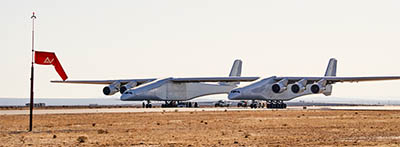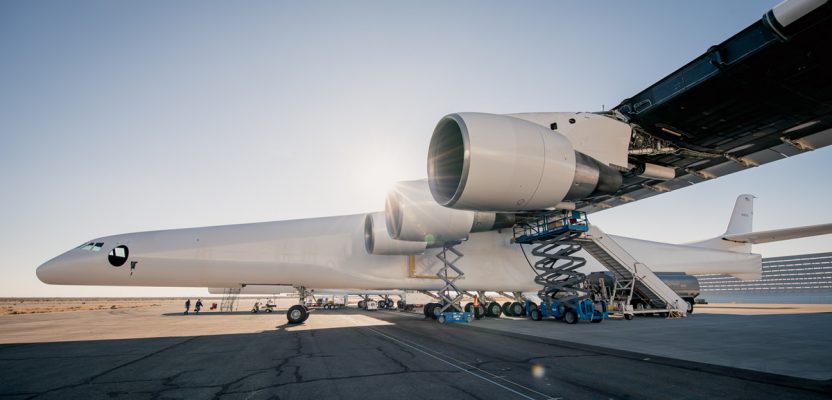First off, let’s decipher that headline, starting at the end.
Space 2.0 (AKA “NewSpace”) is the catch-all phrase that describes the privatization of space and the companies, platforms, and technologies that come with it. We’ll get to the “2.1” in a minute.
Big Bird is the nickname given the world’s largest aircraft (by wingspan, 385’) that is being developed to air-launch rockets and make LEO (low Earth orbit) injection a routine airport-style affair. Founded by Paul Allen (who also co-founded a little company called Microsoft), the company is testing Stratolaunch to carry rockets, starting with Orbital ATK’s Pegasus XL, to high altitude where they will be air-launched and carry their satellite payloads into LEO. The idea behind air-launch is to make the first stage of satellite missions a reusable aircraft as opposed to a rocket. This serves two purposes. 1) It saves a lot of expensive rocket fuel, and 2) by taking an airport approach, it makes access to space more convenient, reliable, and routine.

Black Ice is the code name for a space plane/shuttle that would launch from the Stratolaunch platform to place satellites into orbit. Initial reports suggest that it could be the size of the original NASA space shuttle which ended service in 2011. The flights would be unmanned at the start, with manned flights a future possibility. Details are sparse; the plan is to get Stratolaunch airborne by the end of this year and start on Black Ice then.
Space 2.1? It seems we are witnessing a paradigm shift in satellite orbital injection, one that will make satellite launches and by extension access to space convenient, inexpensive, routine, and safe. Stratolaunch is not alone in the air-launch satellite business; in 2015 Virgin Orbit was spun off from Virgin Galactic with the mission of small-sat LEO injection. The carrier aircraft is the Boeing 747-400 and the rocket is called LauncherOne.
Current payloads for ATK’s Pegasus and Virgin’s LauncherOne are in the one-ton range (977/1100 lbs. respectively), which limits their capabilities to small and micro-sats. Which is great. However, Black Ice is purported to be similar in size to the NASA space shuttle which had a payload of 55,250 lbs. If Black Ice gets anywhere near this payload capacity, it will push Space 2.0 up a notch to Space 2.1.
We’ll circle back around later this year to update you on Stratolaunch’s progress.
This article appeared in xyHt‘s e-newsletter, Pangaea. We email it twice a month, and it covers a variety of unusual geospatial topics in a conversational tone. You’re welcome to subscribe to the e-newsletter here. (You’ll also receive the once-monthly Field Notes newsletter with your subscription.)


